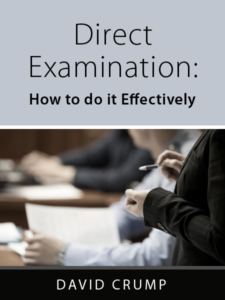There have been many articles written about cross examination, but there is not much that covers direct examination. As a result, what I know about direct comes from virtually the only source I have found: the school of hard knocks. And for reasons that I can tell you, direct is harder than cross. You’ve got to help your witness—this novice in the courtroom—tell a memorable story, with your hands tied by the rules of evidence.
This article is focused on that kind of witness: a percipient witness who has a story to tell. But many, perhaps most, of these people cannot tell their stories well in the artificial atmosphere of a courtroom, with technical rules governing every question and with all eyes staring at them. In other words, this article deals with witnesses like the bystander who happened to see that 18-wheeler T-bone your client’s car, or the line worker who saw the disastrous explosion that resulted from that supplier’s mislabeled pyrotechnics, or the bank employee who witnessed the workings of the system that his firm invented to shortchange your clients. There are other kinds of witnesses that require different strategies, such as experts or hostile witnesses, but these kinds of fact witnesses dominate many trials.
The first part of this article explains the factors that make direct examination difficult. My thought is that the proposed techniques probably will make more sense if you figure out where the pitfalls are. The second part gives advice about word usage, symbolic detail, and non-leading forms of questions. The third part is the meat of the article. It explains the strategies I have learned from experience. Step by step, this part takes you through my (very simple) method of direct examination. Then, the fourth part discusses variations, and a final section contains the author’s conclusions, which include the observation that the methods discussed here are not always easy to implement but almost always give good results.
The Practical Lawyer
CLICK HERE to read the full article, which was originally published in ALI CLE’s The Practical Lawyer.
Subscribe to the print or digital version of The Practical Lawyer today.


